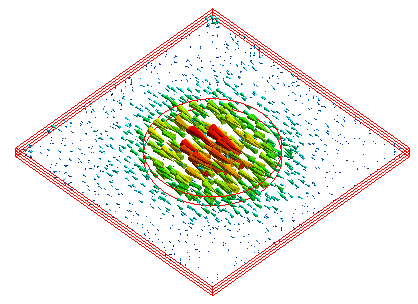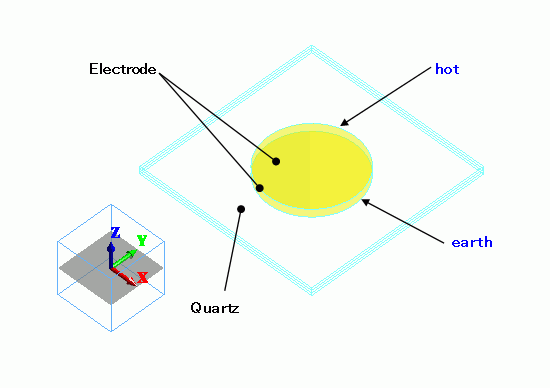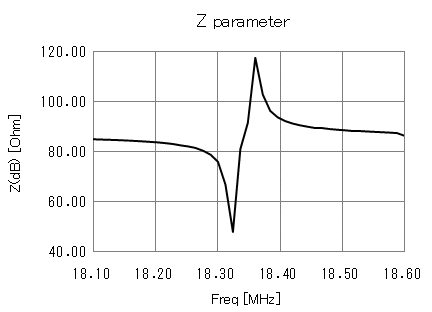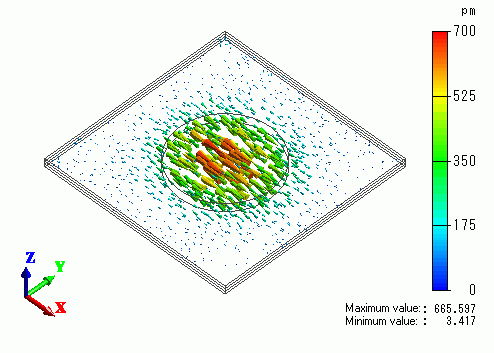
CAE Software【Femtet】Murata Software Co., Ltd.

Example9 Thickness Shear Mode

General
-
The thickness-shear mode vibration of AT-cut quartz is analyzed.
-
The frequency characteristics of electrode’s impedance and the displacement vectors are solved.
-
Unless specified in the list below, the default conditions will be applied.
Analysis Space
|
Item |
Settings |
|
Analysis Space |
3D |
|
Model unit |
mm |
Analysis Conditions
The analysis type is resonant analysis.
|
Item |
Settings |
|
Solvers |
Piezoelectric Analysis [Rayleigh] |
|
Analysis Type |
Harmonic analysis |
|
Options |
N/A |
The harmonic analysis tab is set up as follows.
|
Tab |
Setting Item |
Settings |
|
Harmonic analysis |
Frequency |
Minimum: 18.0×10^6[Hz] Maximum: 18.6×10^6[Hz] |
|
Step |
Select “Linear step by division number”. Division number: 50 |
Model
Circular electrodes are placed on the top and bottom faces of the AT-cut quartz.
-
The quartz is divided into 3 layers in order to have properly sized meshes.
The thickness of each triple layer is approximately 1/6 wavelength of the analysis frequency, which would yield the reasonable mesh size.

Body Attributes and Materials
|
Body Number/Type |
Body Attribute Name |
Material Name |
|
0/Solid |
Quartz |
301_Quartz * |
|
3/Solid |
Quartz |
301_Quartz * |
|
4/Solid |
Quartz |
301_Quartz |
|
5/Sheet |
Electrode |
003_Ag * |
|
6/Sheet |
Electrode |
003_Ag * |
* Available from the Material DB
The cutting angle is set by Euler angle.
|
Body Attribute Name |
Tab |
Tab |
|
Quartz |
Direction |
Specified by: Euler angle Euler angle: Z=0, X=125.25, Z=0 |
|
Electrode |
Thickness/Width |
Thickness of Sheet Body: 0.2×10^-3 |
Boundary Conditions
|
Boundary Condition Name/Topology |
Tab |
Boundary Condition Type |
Settings |
|
earth/Face |
Electric |
Electric wall |
Voltage specified: Voltage 0[V] |
|
hot/Face |
Electric |
Electric wall |
Voltage specified: Voltage 1[V] |
Results
The frequency plot of this antenna’s impedance is shown below.

The resonant frequency is around 18.32[MHz]. The anti-resonant frequency is around 18.36[MHz].
The thickness shear mode at 18.3[MHz] is calculated.
The displacement vectors for it are shown below.


